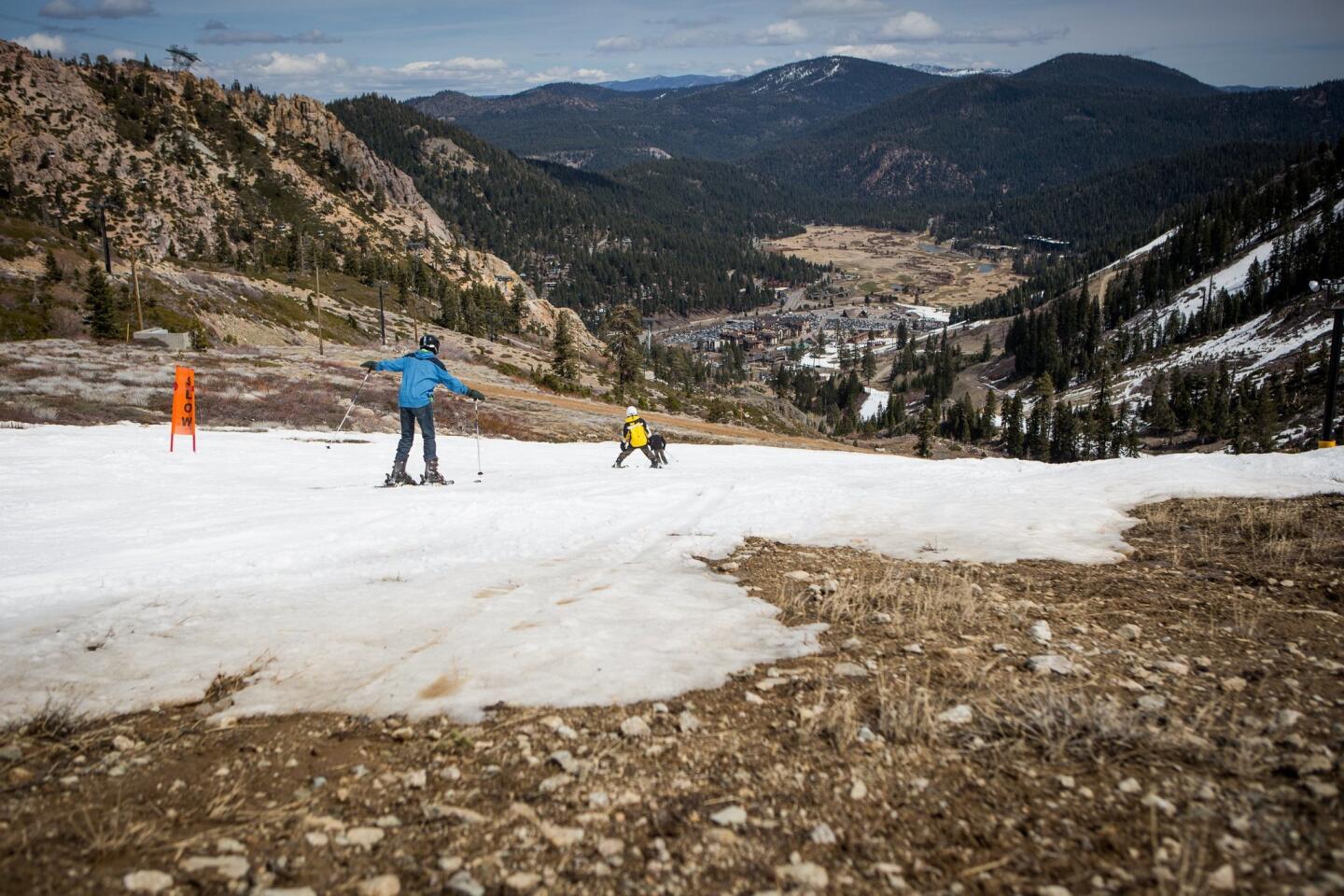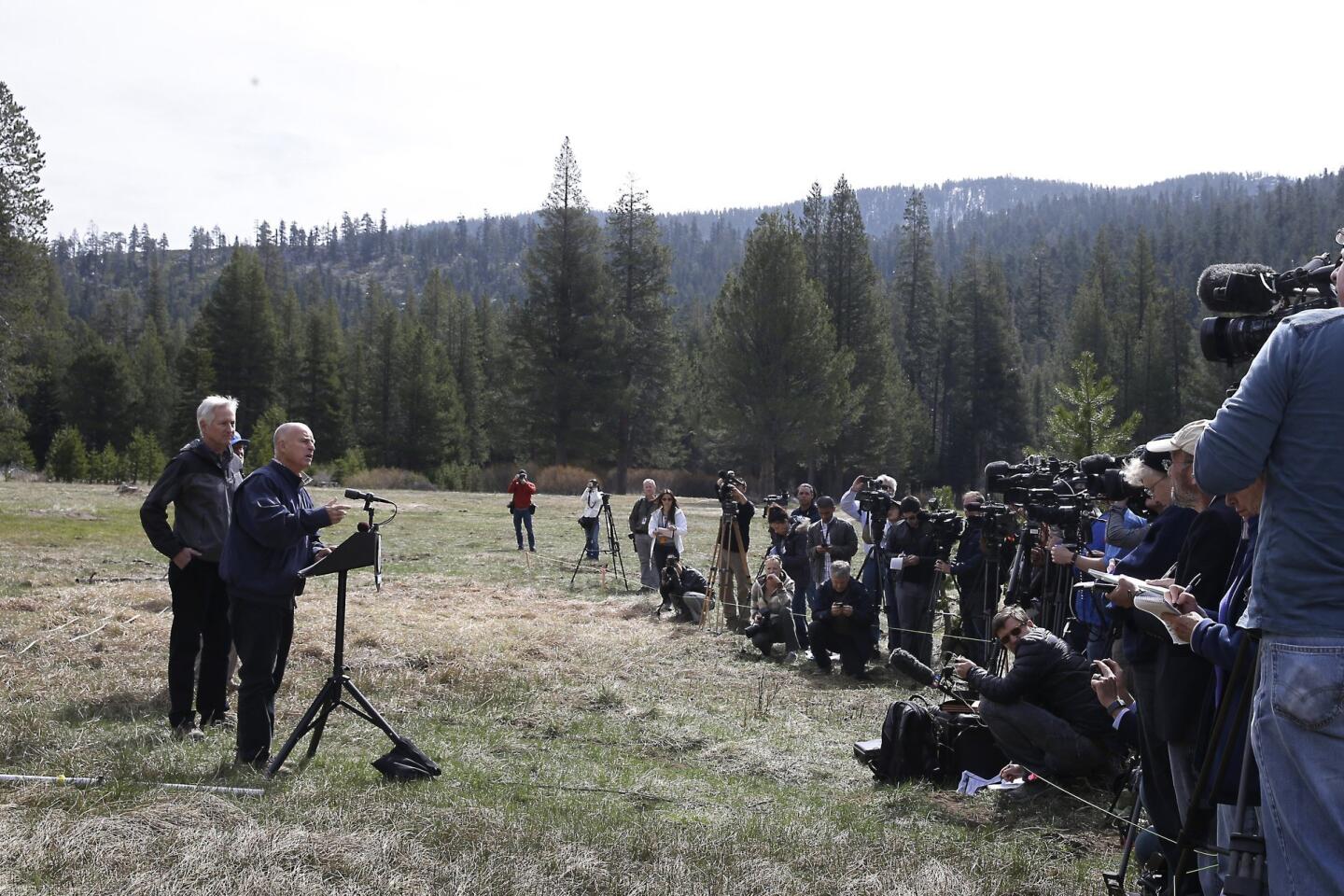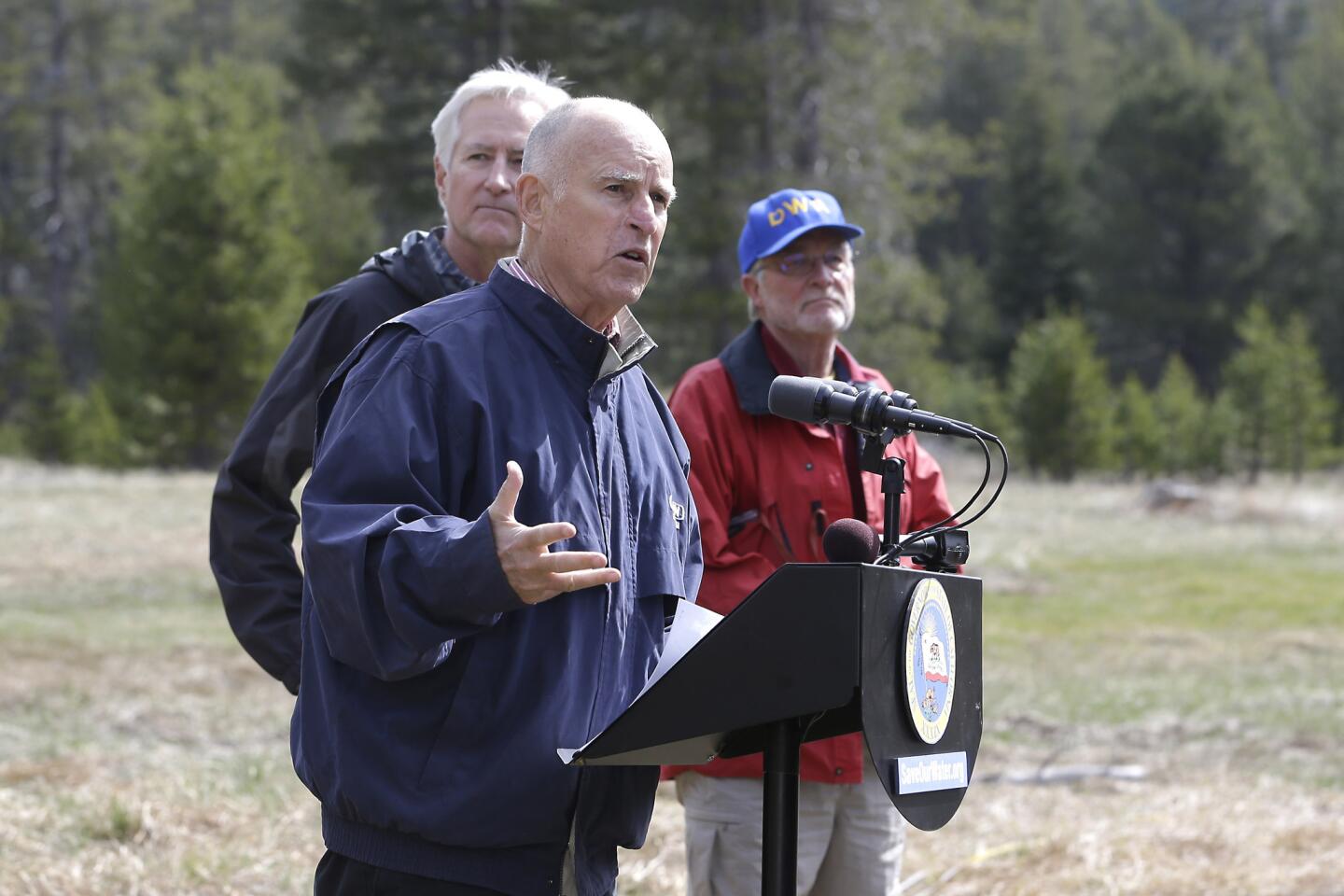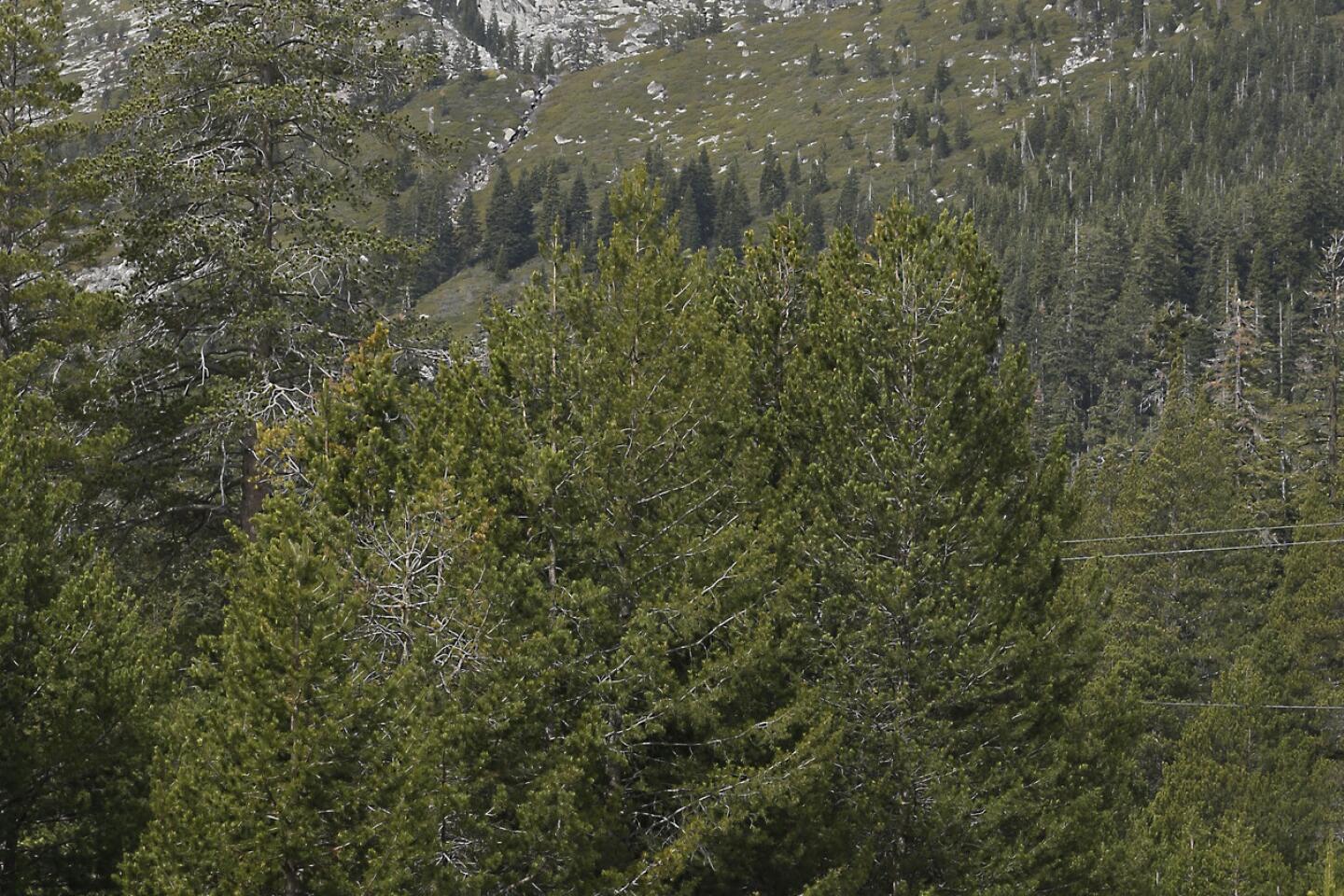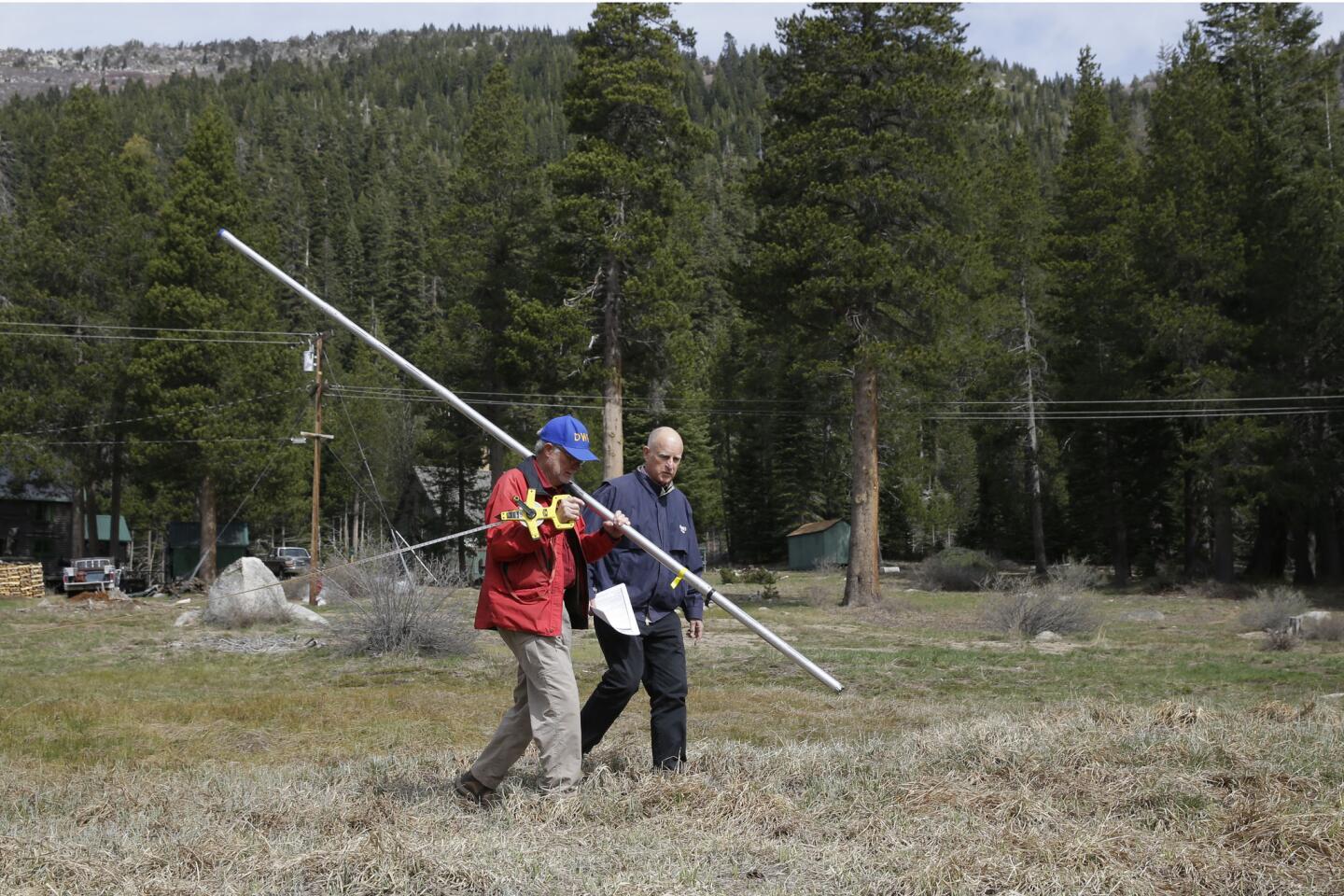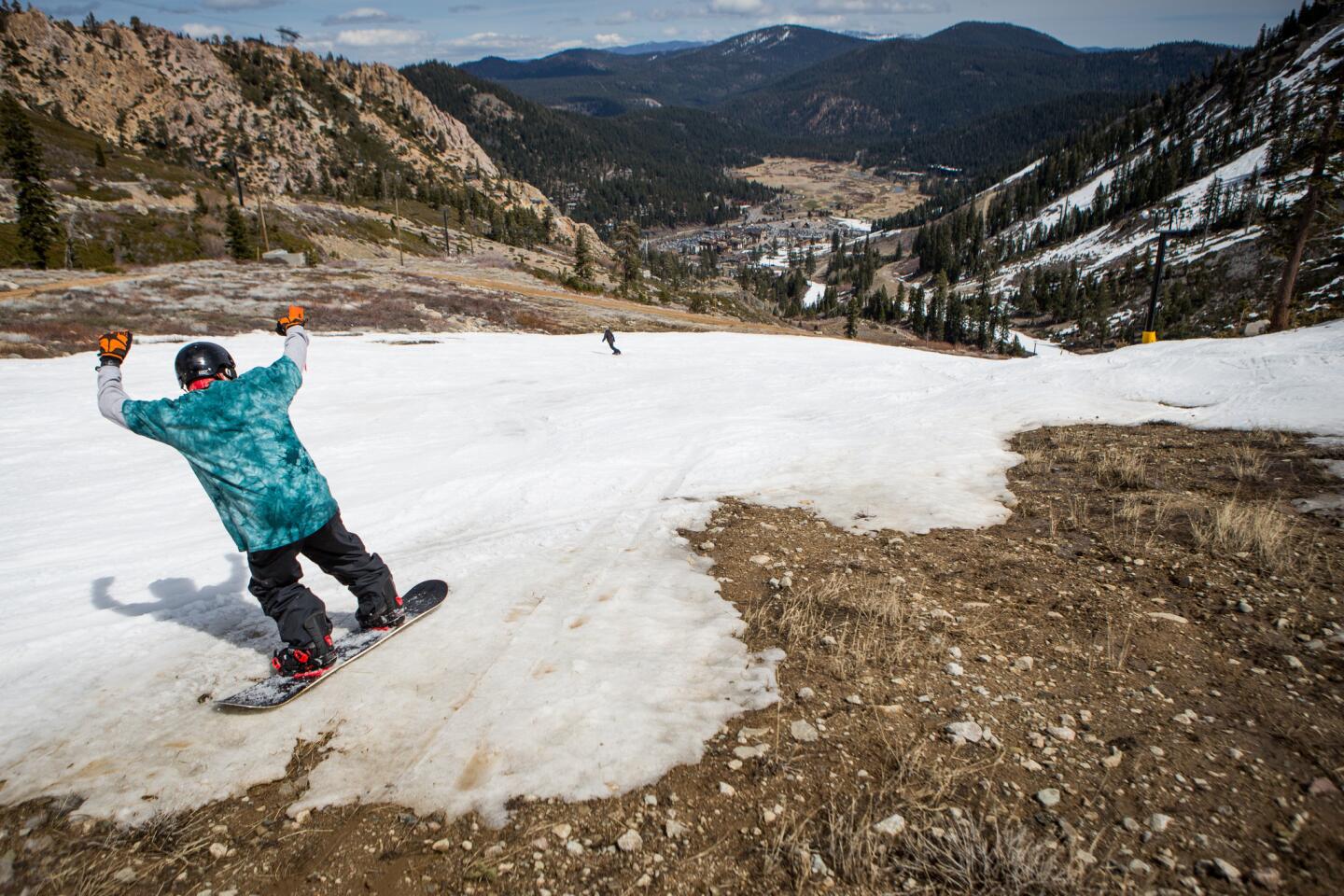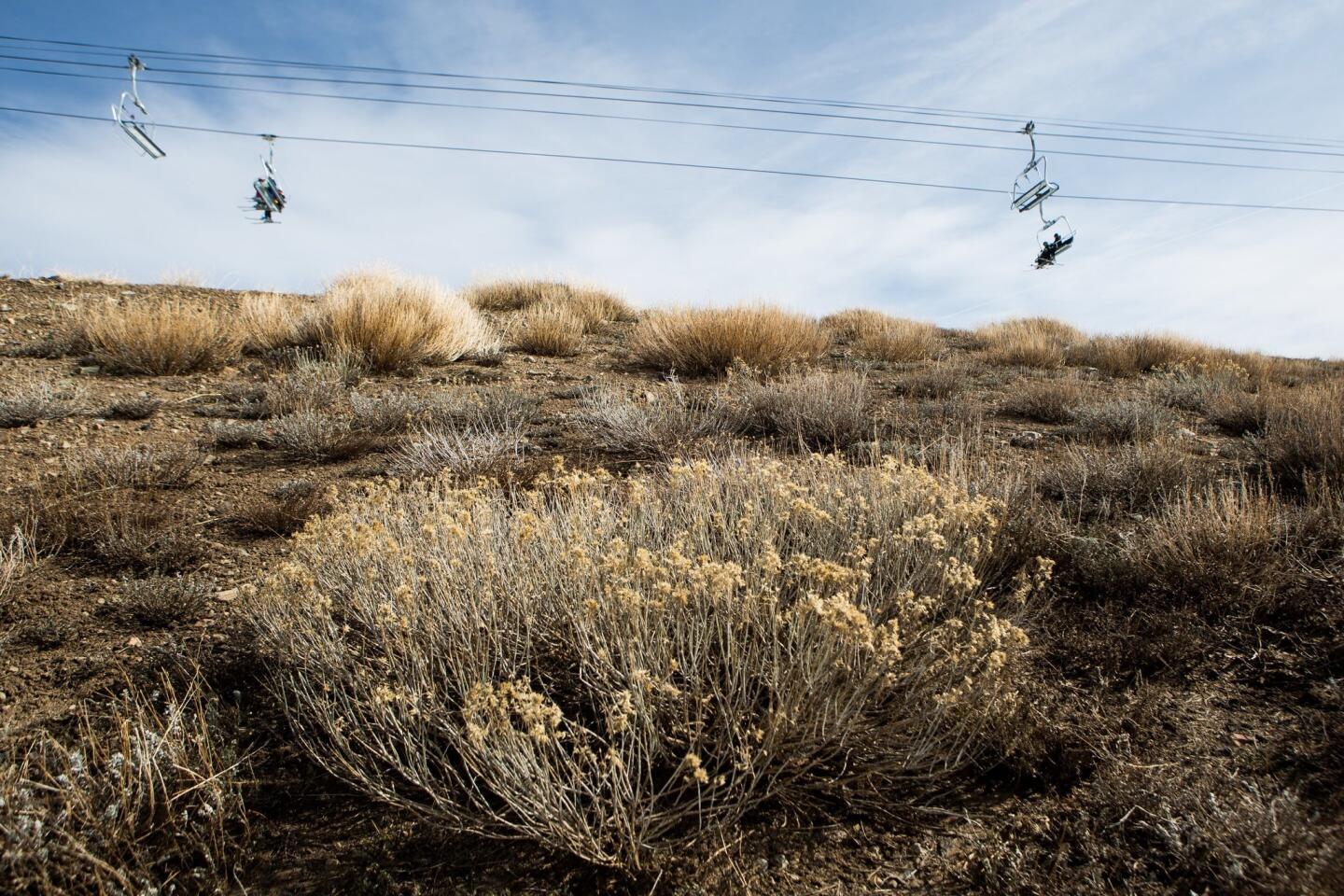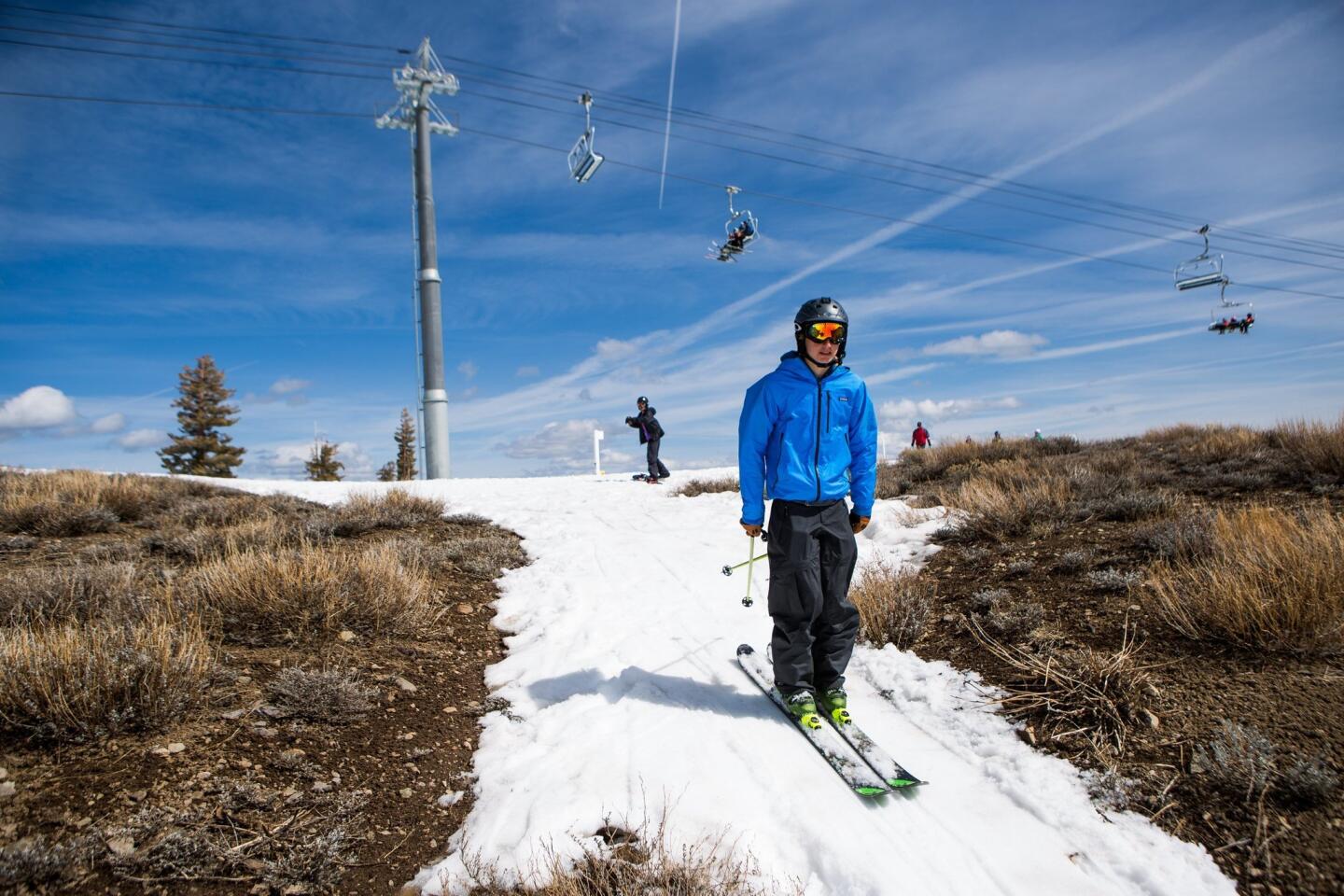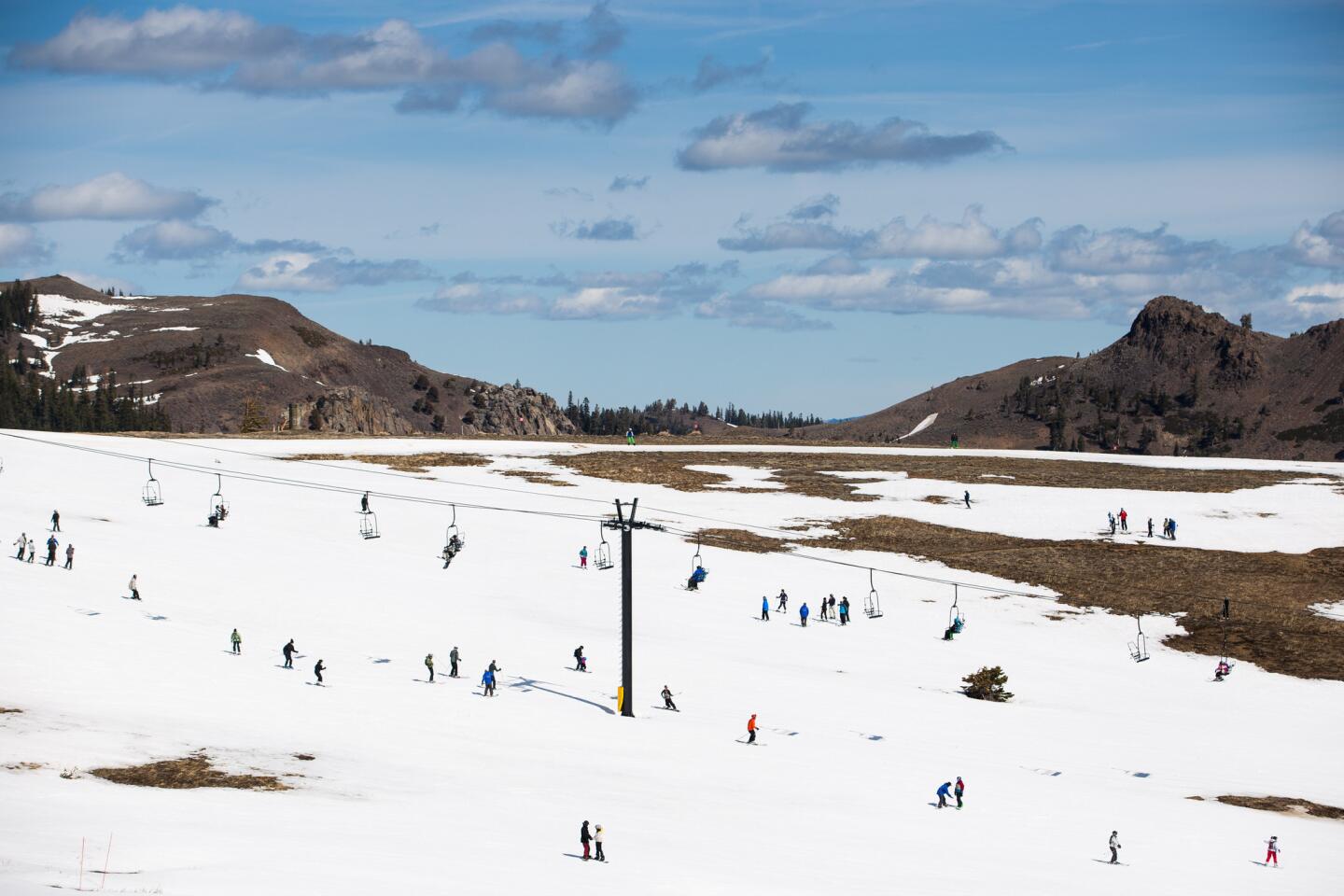Brown orders California’s first mandatory water restrictions: ‘It’s a different world’
Reporting from Phillips, Calif. — Standing in a brown field that would normally be smothered in several feet of snow, Gov. Jerry Brown on Wednesday ordered cities and towns across California to cut water use by 25% as part of a sweeping set of mandatory drought restrictions, the first in state history.
The directive comes more than a year after Brown asked for a 20% voluntary cut in water use that most parts of the state have failed to attain, even as one of the most severe modern droughts drags into a fourth year. It also came on the day that water officials measured the lowest April 1 snowpack in more than 60 years of record-keeping in the Sierra Nevada.
Wearing hiking shoes and a windbreaker in an area that normally requires cross-country skis this time of year, Brown announced the executive order in a Sierra Nevada meadow that provided a dramatic illustration of the state’s parched conditions.
“We’re standing on dry grass,” Brown said. “We should be standing on five feet of snow.”
Emphasizing that the drought could persist, Brown said Californians must change their water habits. “It’s a different world,” he said. “We have to act differently.”
The order focused on urban life even though agriculture accounts for roughly three quarters of Californians’ water usage. Cities have to stop watering the median strips that run down the middle of roads. The state will partner with local agencies to remove 50 million square feet of grass — the equivalent of about 1,150 football fields — and replace it with drought-tolerant landscaping.
State agencies will create a temporary rebate program to encourage homeowners to replace water-guzzling appliances with high-efficiency ones. Golf courses, campuses and cemeteries must cut their water use. New developments will have to install drip or microspray systems if they irrigate with drinking water. Water agencies will discourage water waste with higher rates and fees.
The order aims to reduce the amount of water used statewide in urban areas in 2013 by 25%.
Some critics of Brown’s order said it didn’t do enough to address agricultural uses. Adam Scow, director of Food & Water Watch California, called the order disappointing.
“The governor must save our groundwater from depletion by directing the state water board to protect groundwater as a public resource,” Scow said in a statement.
Felicia Marcus, chairwoman of the State Water Resources Control Board, said the measure isn’t about “finger-pointing”…“It’s about everybody having to step up in these tough times.”
The water board will release draft regulations in mid-April to implement the order. It plans to approve the regulations in early May.
Marcus said local agencies will receive targets for cutting water use based on how well they’ve done so far
Local agencies that have been slow to conserve since then will feel the order’s effects most dramatically, Marcus said.
“You’re rewarding the early adopters ... and you’re saying to the laggers, ‘You have to make a change,’” she said.
Most of the burden of enforcement will fall on local agencies.
If they don’t follow the governor’s order, the state can fine them as much as $10,000 a day.
Many Southern California agencies are already taking steps called for in Brown’s order. For instance, under a turf rebate program administered by the Metropolitan Water District of Southern California, spokesman Bob Muir said homeowners are planning to remove almost 89 million square feet of turf, the equivalent of more than 59,000 frontyards. It’s unclear whether Brown’s mandate for 50 million square feet of lawn replacement includes work already done by local agencies. Similarly, Los Angeles already has a tiered water-rate structure to encourage conservation.
Although Southern California water managers said it might be tough for some cities to meet the 25% target, they welcomed Brown’s action.
“It’s the right time. It’s a proper directive,” said Rob Hunter, general manager of the Municipal Water District of Orange County.
Los Angeles Mayor Eric Garcetti praised the executive order, noting that last year he called for a 20% cut in the city’s water use by 2017.
In Long Beach, Water Department General Manager Kevin Wattier said the order would have the biggest effect on water districts that use much more water per capita than Long Beach and Los Angeles.
“The governor understands we don’t have time to allow any voluntary measures to work,” said Mark Gold of UCLA’s Institute of the Environment and Sustainability. “This is such a growing crisis that mandatory conservation was absolutely necessary.”
Lester Snow, executive director of the California Water Foundation and former state secretary of natural resources, said even more restrictions may be necessary in the future, such as banning all outdoor water use. “We’re probably going to need more action before we’re through the summer,” he said.
Brown issued his order at Phillips Station, about 90 miles east of Sacramento, where state workers conducted a manual snow survey as part of statewide readings that revealed that the water content of the Sierra Nevada snowpack was only about 5% of the average for April 1. That is the lowest for the date in records going back to 1950.
The Sierra snowpack accounts for about 30% of the state’s water supply, and although major reservoir storage is better than it was last year, there will be little snowmelt to replenish reservoirs this spring.
Nurit Katz, UCLA’s Chief Sustainability Officer and co-chair of a UC system-wide water task force, said every campus has created a water action plan focused on reducing consumption. UCLA is installing artificial turf on its intramural field, retrofitting fixtures such as toilets and developing a smart water filtration system.
Combined with other efforts, the campus expects to save millions of gallons of water each year, she said.
Brown’s order requires agricultural districts in depleted groundwater basins to share data on groundwater use with the state.
“The agricultural community is already being hit very hard,” Marcus said.
For the second year in a row, Central Valley growers without senior water rights are likely to get no supplies from the valley’s big federal irrigation project. Last year farmers idled about 500,000 acres for lack of water, and this year they may be forced to leave even more cropland unplanted.
“Some people want to say, ‘What about the farmers?’ And farmers want to say, ‘What about those people watering their lawns?’” Brown said. “We all have something to do, and we can all do a little better.”
[email protected]
ALSO:
169 drought maps reveal just how thirsty California has become
State drought relief package falls short, conservation advocates say
Opinion: California has about one year of water stored. Will you ration now?
More to Read
Sign up for Essential California
The most important California stories and recommendations in your inbox every morning.
You may occasionally receive promotional content from the Los Angeles Times.
